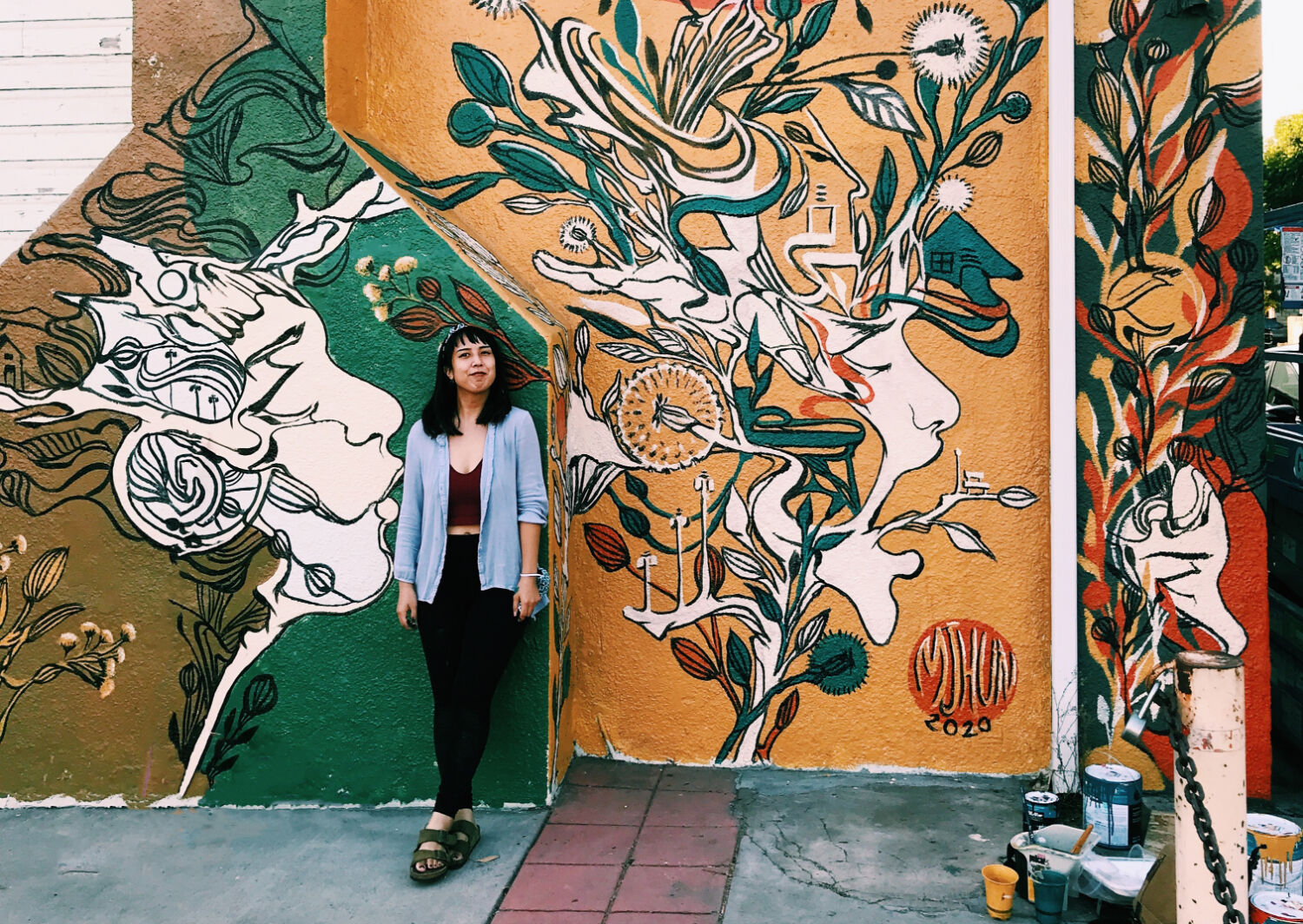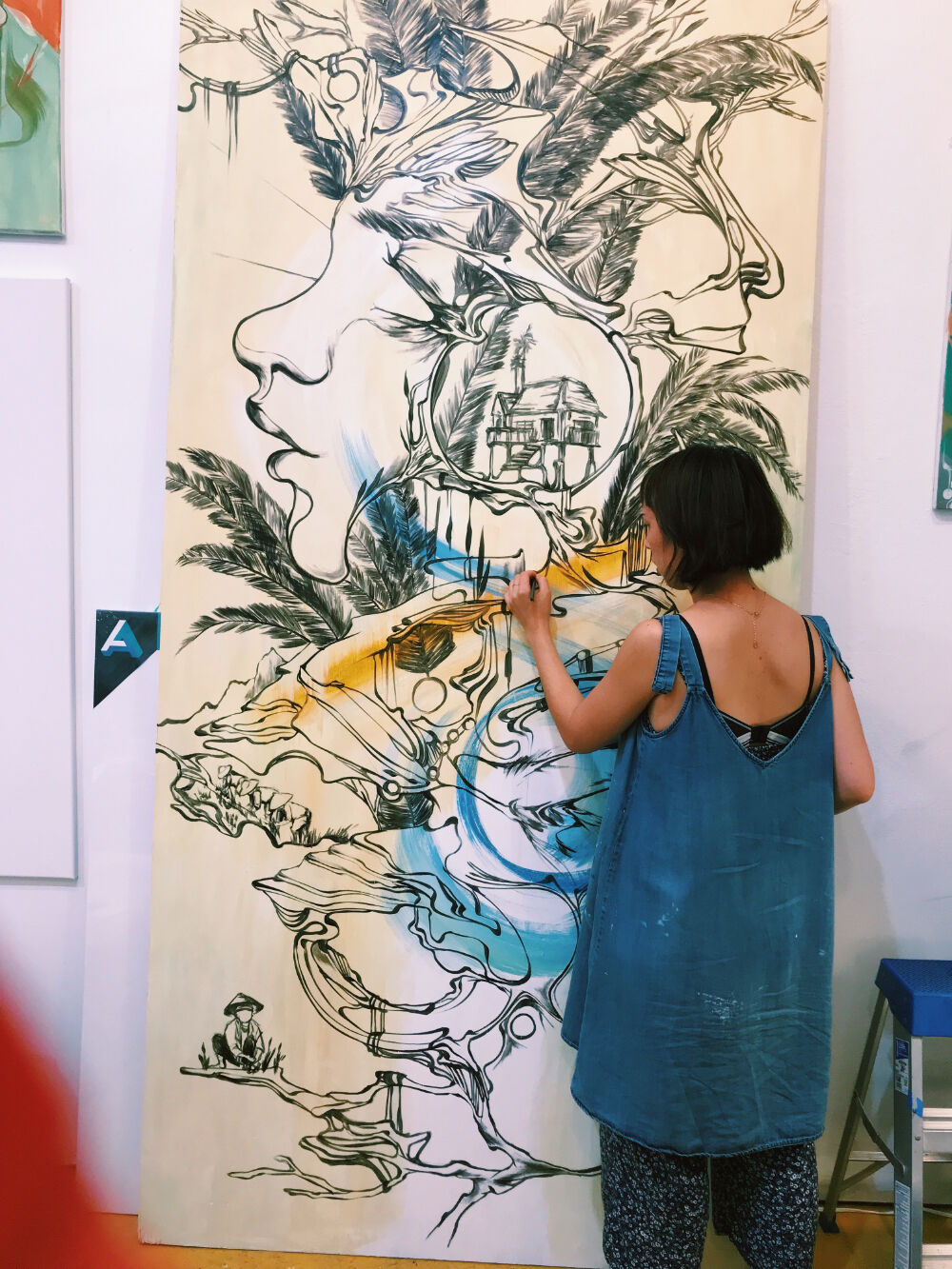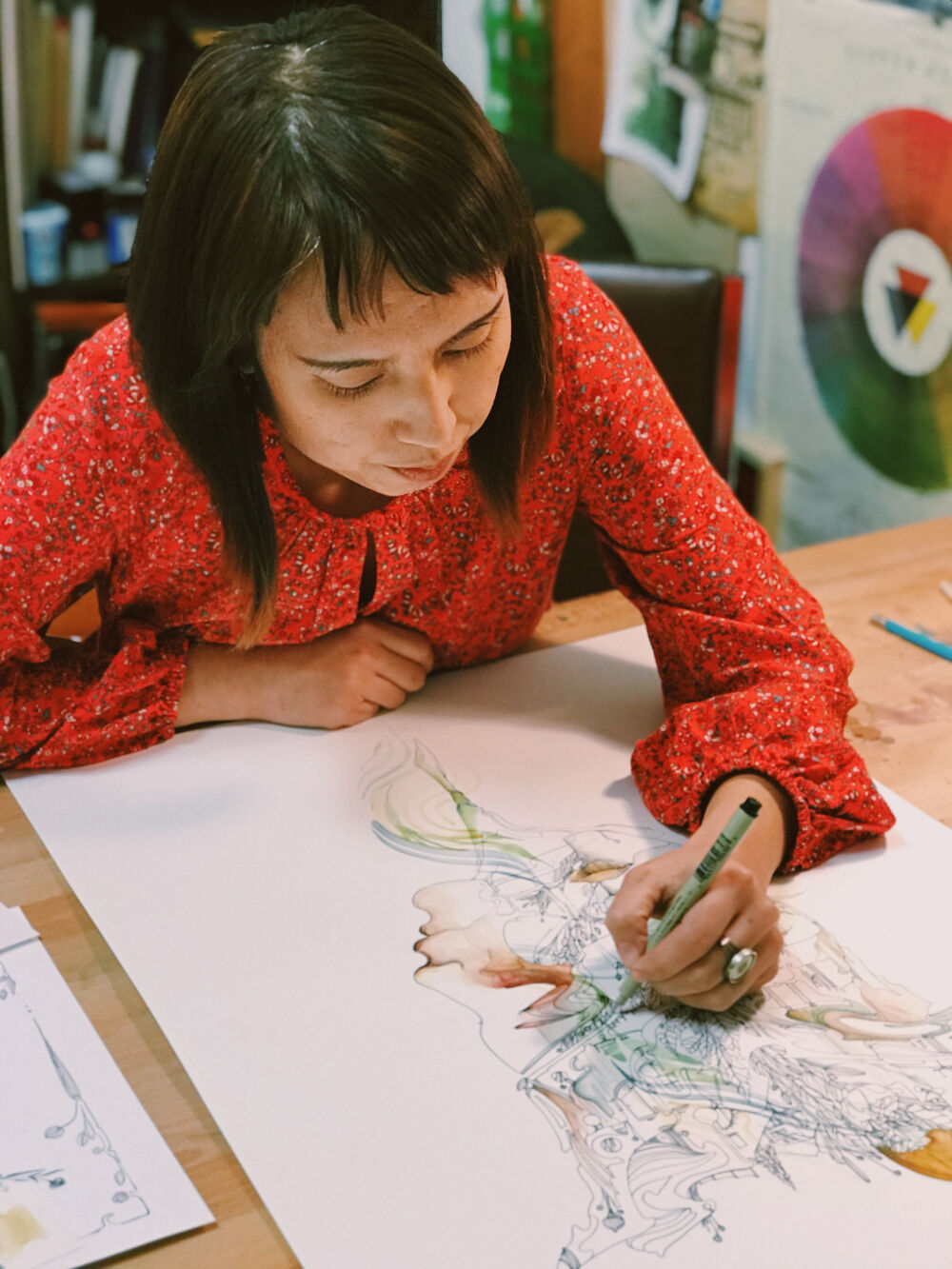
Mary Jhun main
After seven years of simultaneously making art and holding down a job at Cafe Virtuoso, muralist Mary Jhun is ready to prevail on art alone.
“Cafe Virtuoso helped me shape who I wanted to be as far as being a muralist,” she says. “They gave me the walls. I’m beyond grateful.”
We met at Jhun’s studio in Barrio Logan’s Art Hub, a building and art community on Logan Avenue that hosts more than 20 art and retail spaces. Most of the week, the studio is Jhun’s private sanctuary, where her surreal “girls” are born from daily reflections and the current state of her subconscious.

Mary Jhun – 2
“It’s constant self-reflection, just a little bit more beautiful,” she says. “What colors mean to me is mood, and the brush strokes mean energy. That allows the girls to be challenged with a story. I create stories as I start to create layers.”
From Friday to Sunday, the studio becomes a shop, where admirers can visit in person to buy prints, apparel, stationery, and accessories featuring her art. Besides her studio, website, and social media, her work can be found around San Diego and in local businesses.
“No matter how romantic it is, you have to do the business stuff correctly,” says Jhun, who also credits her years in the coffee service industry for teaching her how to be an entrepreneur.
Jhun was born in Cavite, Philippines, and her family immigrated to Southern California when she was six years old, eventually settling in Paradise Hills. “I had an accent when I was growing up,” she says, which made her uncomfortable speaking. “So a lot of the time I used art as a platform to make friends.”
Since then, art has been her primary language, a way to visualize what she isn’t ready to verbalize. As a teen, she drew her “girls” more realistically. Over time, she left out more facial details and let the lines flow into impressions of other natural forms. Inspired by the styles of art nouveau artists like Alphonse Mucha, each girl is an expression of how Jhun feels internally and not a portrait of anyone specific. “Most of my work is unplanned. I like working with this automatic idea of painting, where your body is just used to moving in these shifts,” she says. Even large murals, like the one inside Snoice Kearny Mesa, aren’t sketched. Rather, she immerses herself in the space, imagines where to place the girl’s forehead, and goes from there. “It’s a motor skill with a lot of emotion.”

Mary Jhun – 3
It’s also been her therapy. During her early 20s, Jhun was diagnosed with bipolar disorder and ADHD. “I was always angry. I was always upset,” she says. Then, when she was 28, she learned she was experiencing premature ovarian failure, a condition in which a person with a uterus goes through menopause before age 40, which also means she can’t have children.
“Finding that out solidified why I was going through these emotional trials and feeling so alone in my 20s,” Jhun says. “It was insane. I was already going through life wanting to do art, so that’s a very lonely thing. I learned that if I’m constantly being put in a state to challenge myself alone, I need to strengthen what ‘alone’ looks like, and make it exciting.”
One way has been to go on solo sketching trips, be it somewhere like LA’s Japantown or somewhere local. She also studies how renowned artists are remembered for how they lived and worked, how they’re discussed beyond their lifetime. “When people talk about great painters, it’s almost like they never left,” Jhun says. “I want to get to that place.”


















